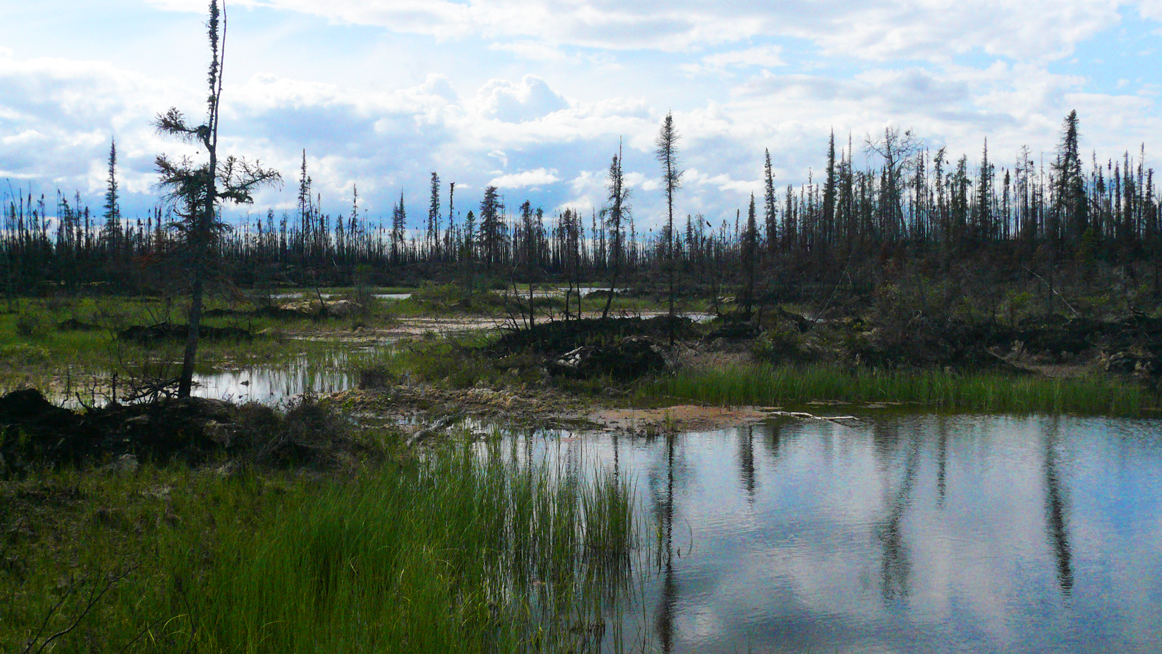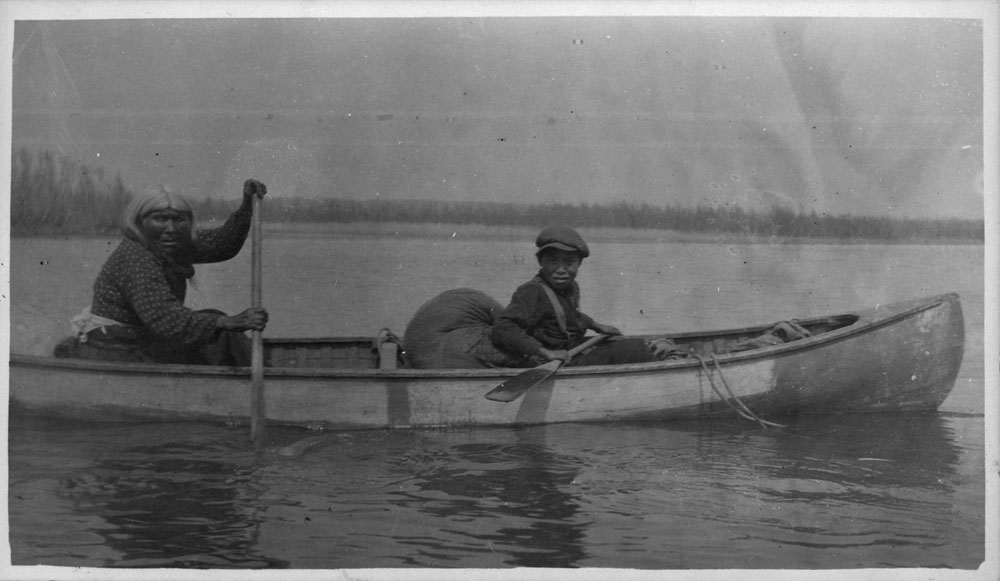|
Wekweètì
Wekweètì (; from the Dogrib language meaning "rock lakes"), officially the ''Tłı̨chǫ Community Government of Wekweètì'' is a community in the North Slave Region of the Northwest Territories, Canada. Wekweètì is a Tłı̨chǫ (Dogrib Dene) aboriginal community and is located north of Yellowknife. It has no year-round road access but does have a winter ice road connection; the majority of transportation to and from the community is through the Wekweètì Airport. Wekweètì is the closest community to the Ekati Diamond Mine on the border with Nunavut. Wekweètì is part of the Tlicho Government. History The area is within the traditional territory of the Tłı̨chǫ (Dogrib) First Nation and was a popular hunting camp prior to permanent settlement. In the 1960s, Dene elders around Behchokǫ̀ decided to return to the land and establish traditional camps in the bush. Wekweètì was established during this time, although in more recent years it too has become a modern co ... [...More Info...] [...Related Items...] OR: [Wikipedia] [Google] [Baidu] |
Dechi Laot'i First Nations
The Dechi Laot'i First Nations is a Tłı̨chǫ First Nations band government in the Northwest Territories. The band's main community is Wekweètì, known before 2005 as Snare Lake, where 173 of its 193 members live. In 2005, Dechi Laot'i became part of the Tłı̨chǫ Government, and collectively holds title to 39,000 square kilometers of Tłı̨chǫ land. The new Wekweètì Community Government has assumed most of the band's powers and responsibilities. However, the federal government still recognizes Dechi Laot'i for Indian Act The ''Indian Act'' (, long name ''An Act to amend and consolidate the laws respecting Indians'') is a Canadian act of Parliament that concerns registered Indians, their bands, and the system of Indian reserves. First passed in 1876 and still ... enrollment purposes. References First Nations in the Northwest Territories Dene governments {{NorthwestTerritories-stub ... [...More Info...] [...Related Items...] OR: [Wikipedia] [Google] [Baidu] |
Dogrib Language
The Tlicho language, also known as Tłı̨chǫ Yatıì or the Dogrib language, is a Northern Athabaskan language spoken by the Tłı̨chǫ (Dogrib people) First Nations of the Canadian Northwest Territories. According to Statistics Canada in 2011, there were 2,080 people who speak Tłı̨chǫ Yatıì. As of 2016, 1,735 people speak the language. Tłıchǫ Yatıì is spoken by the Tłıchǫ, a Dene First Nations people that reside in the Northwest Territories of Canada. Tłı̨chǫ lands lie east of Mackenzie River (Deh Cho) between Great Slave Lake (Tıdeè) and Great Bear Lake (Sahtu) in the Northwest Territories. There are four primary communities that speak the language: Gamèti (formerly Rae Lakes), Behchokǫ̀ (formerly Rae-Edzo), Wekweètì (formerly Snare Lakes) and Whatì (formerly Lac La Martre). From a population number of about 800 during the mid-19th century to about 1,700 by the 1970s, the population has grown to about 2,080 as recorded by the 2011 Censu ... [...More Info...] [...Related Items...] OR: [Wikipedia] [Google] [Baidu] |
North Slave Region
The North Slave Region or ''Tłicho Region'' is one of five administrative regions in the Northwest Territories of Canada. It is the most populous of the five regions, with a population of almost 23,000. According to Municipal and Community Affairs the region consists of eight communities with the regional office situated in Yellowknife and a sub-office in Behchokǫ̀. With the exception of Yellowknife, the communities are predominantly First Nations First Nations or first peoples may refer to: * Indigenous peoples, for ethnic groups who are the earliest known inhabitants of an area. Indigenous groups *First Nations is commonly used to describe some Indigenous groups including: ** First Nat .... Communities The North Slave Region includes the following communities: Notes References External links North Slave Region at Municipal and Community Affairs {{coord, 62, 48, 09, N, 116, 02, 47, W, region:CA-NT_type:adm1st_scale:10000000, display=title, name=North Slav ... [...More Info...] [...Related Items...] OR: [Wikipedia] [Google] [Baidu] |
Monfwi
Monfwi is a electoral district for the , . The district consists of the four |
Wekweètì Airport
Wekweètì Airport , formerly known as Snare Lake Airport, is located east of Wekweeti, Northwest Territories, Canada Canada is a country in North America. Its ten provinces and three territories extend from the Atlantic Ocean to the Pacific Ocean and northward into the Arctic Ocean, covering over , making it the world's second-largest country by tota .... Airlines and destinations References Certified airports in the North Slave Region {{NorthwestTerritories-airport-stub ... [...More Info...] [...Related Items...] OR: [Wikipedia] [Google] [Baidu] |
Behchokǫ̀
Behchokǫ̀ ( ɛ́ht͡ʃʰókʰõ̀or ɛ́ht͡sʰókʰõ̀ ) (from the Tłı̨chǫ meaning "Behcho's place"), officially the ''Tłı̨chǫ Community Government of Behchokǫ̀,'' is a community in the North Slave Region of the Northwest Territories, Canada. Behchokǫ̀ is located on the Yellowknife Highway (Great Slave Highway), on the northwest tip of Great Slave Lake, approximately northwest of Yellowknife. History The north arm of Great Slave Lake is the traditional territory of the Tłı̨chǫ (Dogrib), a northern Dene (formerly called Athapaskan) group. Explorer Samuel Hearne was the first European to encounter Dogrib-speaking people while crossing the lands north of Great Slave Lake in 1772. Later, in 1789, trader Alexander Mackenzie traveled by canoe very close to their territory while trading with the Yellowknives, another First Nations peoples, along the north arm of the big lake. The first trading post in this region was at the entrance of Yellowknife Bay ... [...More Info...] [...Related Items...] OR: [Wikipedia] [Google] [Baidu] |
Dene
The Dene people () are an indigenous group of First Nations who inhabit the northern boreal and Arctic regions of Canada. The Dene speak Northern Athabaskan languages. ''Dene'' is the common Athabaskan word for "people". The term "Dene" has two usages. More commonly, it is used narrowly to refer to the Athabaskan speakers of the Northwest Territories and Nunavut in Canada, especially including the Chipewyan (Denesuline), Tlicho (''Dogrib''), Yellowknives (T'atsaot'ine), Slavey (Deh Gah Got'ine or Deh Cho), and Sahtu (the Eastern group in Jeff Leer's classification; part of the Northwestern Canada group in Keren Rice's classification). However, it is sometimes also used to refer to all Northern Athabaskan speakers, who are spread in a wide range all across Alaska and northern Canada. The Southern Athabaskan speakers, however, also refer to themselves by similar words: Diné (Navajo) and Indé (Apache). Location Dene are spread through a wide region. They live in t ... [...More Info...] [...Related Items...] OR: [Wikipedia] [Google] [Baidu] |
1991 Canadian Census
The 1991 Canadian census was a detailed enumeration of the Canadian population. Census day was June 4, 1991. On that day, Statistics Canada Statistics Canada (StatCan; french: Statistique Canada), formed in 1971, is the agency of the Government of Canada commissioned with producing statistics to help better understand Canada, its population, resources, economy, society, and cultur ... attempted to count every person in Canada. The total population count of Canada was 27,296,859. This was a 7.9% increase over the 1986 census of 25,309,331. The previous census was the 1986 census and the following census was in 1996 census. Canada by the numbers A summary of information about Canada. Population by province References {{People of Canada Censuses in Canada 1991 censuses 1991 in Canada ... [...More Info...] [...Related Items...] OR: [Wikipedia] [Google] [Baidu] |
Indian Act
The ''Indian Act'' (, long name ''An Act to amend and consolidate the laws respecting Indians'') is a Canadian act of Parliament that concerns registered Indians, their bands, and the system of Indian reserves. First passed in 1876 and still in force with amendments, it is the primary document that defines how the Government of Canada interacts with the 614 First Nation bands in Canada and their members. Throughout its long history, the act has been a subject of controversy and has been interpreted in different ways by both Indigenous Canadians and non-Indigenous Canadians. The legislation has been amended many times, including "over five major changes" made in 2002. The act is very wide-ranging in scope, covering governance, land use, healthcare, education, and more on Indian reserves. Notably, the original ''Indian Act'' defines two elements that affect all Indigenous Canadians: :It says how reserves and bands can operate. The act sets out rules for governing Indian res ... [...More Info...] [...Related Items...] OR: [Wikipedia] [Google] [Baidu] |
Band Government
In Canada, an Indian band or band (french: bande indienne, link=no), sometimes referred to as a First Nation band (french: bande de la Première Nation, link=no) or simply a First Nation, is the basic unit of government for those peoples subject to the ''Indian Act'' (i.e. status Indians or First Nations). Bands are typically small groups of people: the largest in the country, the Six Nations of the Grand River First Nation had 22,294 members in September 2005, and many have a membership below 100 people. Each First Nation is typically represented by a band council (french: conseil de bande) chaired by an elected chief, and sometimes also a hereditary chief. As of 2013, there were 614 bands in Canada. Membership in a band is controlled in one of two ways: for most bands, membership is obtained by becoming listed on the Indian Register maintained by the government. As of 2013, there were 253 First Nations which had their own membership criteria, so that not all status Indians ... [...More Info...] [...Related Items...] OR: [Wikipedia] [Google] [Baidu] |


